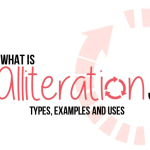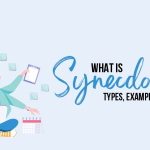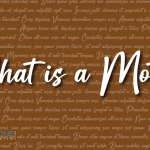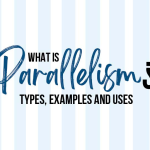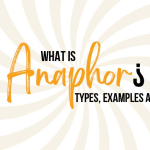Symbolism is a literary device or technique that uses symbols to represent ideas, qualities, or concepts beyond their literal meaning. It is a way for authors to convey deeper meanings and add layers of complexity to their works. Symbols can take various forms, such as objects, actions, characters, or settings, and they often carry symbolic significance that goes beyond their immediate presence in the story.
Symbols can be universal, with widely recognized meanings, or they can be specific to a particular work or culture. For example, a white dove is often used as a symbol of peace and purity, while a red rose can symbolize love or passion. Symbols can also be more abstract, representing ideas or emotions, such as a journey symbolizing personal growth or a broken mirror representing shattered self-image.
Read: Why are literary devices used? Types of literary devices that you should know.
The power of symbolism lies in its ability to evoke emotions, create connections, and invite readers to engage in deeper interpretation. It allows authors to communicate complex themes, messages, or social commentary in a more subtle and evocative manner. By using symbols, writers can transcend the boundaries of literal language and tap into the collective unconscious, tapping into universal human experiences and archetypes.
Interpreting symbolism in literature often involves analyzing the context, recurring motifs, and the author’s intent to uncover the underlying meanings and messages. However, it’s important to note that symbolism can be subjective, and different readers may interpret symbols differently based on their own experiences and perspectives.
You may also read: The Mighty Red by Louise Erdrich: A Deep Dive into Her Latest Novel
You may also read: 10 Classic Flat Character Examples in Literature and Film
What are the Types of Symbolism?
Symbolism in literature can take various forms and serve different purposes. Here are some common types of symbolism:
- Object Symbolism: Object symbolism involves using objects or things to represent abstract ideas or concepts. For instance, a key can symbolize unlocking hidden truths or gaining access to new possibilities. In a story, a character finding a key could signify their quest for knowledge, enlightenment, or personal truth, overcome obstacles, or open doors to new opportunities. Through the use of object symbolism, the key takes on a deeper meaning, adding layers of metaphorical significance to transformation. The key becomes a tangible representation of their desire to tell a narrative, inviting readers to reflect on the broader themes and messages conveyed by the story.
- Color Symbolism: Color symbolism involves the use of colors to convey meaning or evoke emotions in a literary or artistic context. For example, the color red often symbolizes passion, love, or danger. In a story, a red rose may represent intense love or desire, while red blood may symbolize violence or sacrifice. On the other hand, blue is commonly associated with calmness or sadness. In a painting, a predominantly blue landscape might evoke a sense of tranquility or melancholy. By utilizing color symbolism, writers and artists can imbue their works with deeper layers of interpretation, allowing colors to communicate themes, moods, or character traits to the audience, enhancing the overall impact and resonance of the piece.
- Animal Symbolism: Animal symbolism involves the use of animals to represent specific qualities, characteristics, or ideas in literature, art, or cultural contexts. For instance, a lion is often seen as a symbol of strength, courage, and leadership. In a story, a character with lion-like qualities may embody these traits or display dominance and bravery. Conversely, a dove is commonly associated with peace, purity, and innocence. In a painting, a dove carrying an olive branch can represent a desire for harmony and reconciliation. By employing animal symbolism, writers and artists tap into the collective cultural meanings associated with certain animals, enhancing the depth and resonance of their work while providing readers or viewers with visual or metaphorical cues to interpret and engage with the intended themes or messages.
- Nature Symbolism: Nature symbolism is the use of elements from the natural world to convey deeper meanings and evoke emotions. For example, a barren landscape, with its dry and lifeless features, may symbolize desolation, loneliness, or loss in a literary work. It can serve as a visual representation of emotional or spiritual emptiness. Conversely, a blooming flower bursting with vibrant colors and fragrances can symbolize growth, renewal, or the beauty of life. The flower’s transformation from a bud to full bloom can parallel personal growth or the emergence of hope in a character’s journey. Nature symbolism allows writers and artists to tap into the universal associations and metaphors found in the natural world, offering a rich tapestry of imagery and symbolism to enhance the depth and resonance of their work.
- Character Symbolism: Character symbolism involves the use of specific characters to represent or embody certain ideas, archetypes, or qualities. For instance, a wise old sage character in a story can symbolize wisdom, knowledge, or guidance. This character often possesses deep insights, provides valuable advice, and serves as a mentor figure for other characters. Through their actions, dialogue, and interactions, the wise old sage becomes a symbol of wisdom and enlightenment, guiding the protagonist or other characters on their journey of self-discovery or growth. By embodying these qualities, the character becomes a focal point for the exploration of themes related to wisdom, knowledge, and the search for truth. Character symbolism enhances the narrative by providing a tangible representation of abstract concepts, allowing readers to connect with and understand these ideas on a deeper level.
- Religious or Mythological Symbolism: Religious or mythological symbolism draws upon symbols and imagery from religious or mythological contexts to convey deeper spiritual or allegorical meanings. An example of this is the serpent in biblical stories, which often symbolizes temptation or evil. In the biblical narrative of Adam and Eve in the Garden of Eden, the serpent is depicted as a cunning and deceptive creature that entices Eve to eat the forbidden fruit, leading to their expulsion from paradise. The serpent’s role in this story serves as a metaphor for the temptations and moral struggles that humans face. Its symbolism extends beyond the literal portrayal of a serpent, representing the complexities of human nature, the allure of forbidden desires, and the consequences of succumbing to temptation. Through religious or mythological symbolism, authors tap into universal cultural references to explore profound and timeless themes, adding layers of depth and meaning to their works.
- Number Symbolism: Number symbolism is the use of numbers to represent abstract ideas or concepts in literature, art, and various cultural contexts. For example, the number seven has often been associated with completeness or perfection. This symbolism is deeply rooted in cultural and religious traditions. In various mythologies, there are seven days of creation, seven virtues, and seven deadly sins. In literature, the number seven is frequently used to represent a sense of wholeness or divine order. For instance, in J.R.R. Tolkien’s “The Lord of the Rings,” there are seven members in the Fellowship of the Ring, symbolizing the unity and completeness of their quest. Number symbolism adds depth and layers of meaning to creative works, enriching the narrative and inviting readers to explore the symbolic significance behind the numbers.
- Setting Symbolism: In literature, settings can often serve as powerful symbols, representing or reflecting underlying themes or ideas. For example, a crumbling, decaying house can symbolize the decline of a family or society. Its worn-out state and deteriorating structure suggest a loss of stability, prosperity, and harmony. The physical decay mirrors the emotional and moral decline of the inhabitants, highlighting the disintegration of relationships or societal values. This symbolism can be used to emphasize themes such as the passage of time, the consequences of neglect, or the fragility of human existence. Through the evocative power of setting symbolism, authors can effectively convey deeper meanings and enrich the reader’s understanding of the narrative.
It’s important to note that these categories are not mutually exclusive, and symbolism in literature can often overlap and combine different types for greater complexity and depth. The interpretation of symbolism can vary, and it is often influenced by the cultural, historical, and personal contexts in which the reader engages with the text.
You may also like: What is a Preface? Key Characteristics with Examples
Here are some examples from books which showcase symbolism:
ere are numerous books that employ symbolism effectively, but here are a few widely recognized examples:
- “The Great Gatsby” by F. Scott Fitzgerald: This classic novel explores the American Dream and the corruption of wealth through vivid symbolism. The green light at the end of Daisy’s dock symbolizes Gatsby’s unattainable desires and the illusion of the American Dream.
- “Lord of the Flies” by William Golding: In this allegorical tale, the deserted island where a group of boys is stranded becomes a microcosm of society. The conch shell symbolizes order and civilization, while the beast represents the innate evil within humanity.
- “To Kill a Mockingbird” by Harper Lee: Through the character of Boo Radley, Lee uses symbolism to explore themes of prejudice, empathy, and the nature of courage. Boo Radley’s house symbolizes isolation and the fear of the unknown.
- “The Scarlet Letter” by Nathaniel Hawthorne: This novel is rich in symbolism, with the scarlet letter “A” worn by Hester Prynne symbolizing her sin and societal judgment. The forest represents freedom and the ability to escape societal constraints.
- “Animal Farm” by George Orwell: This political allegory uses farm animals to symbolize the events leading up to the Russian Revolution and the subsequent Soviet Union. The pigs, especially Napoleon and Snowball, represent political leaders and the corruption of power.
Read: Have a look on the most prestigious literary awards of all Time.
In conclusion, symbolism is a powerful literary tool that enhances the depth and richness of a text by using symbols to convey deeper meanings and evoke emotions. It allows authors to transcend the literal and invite readers to engage in a more profound exploration of the human experience









